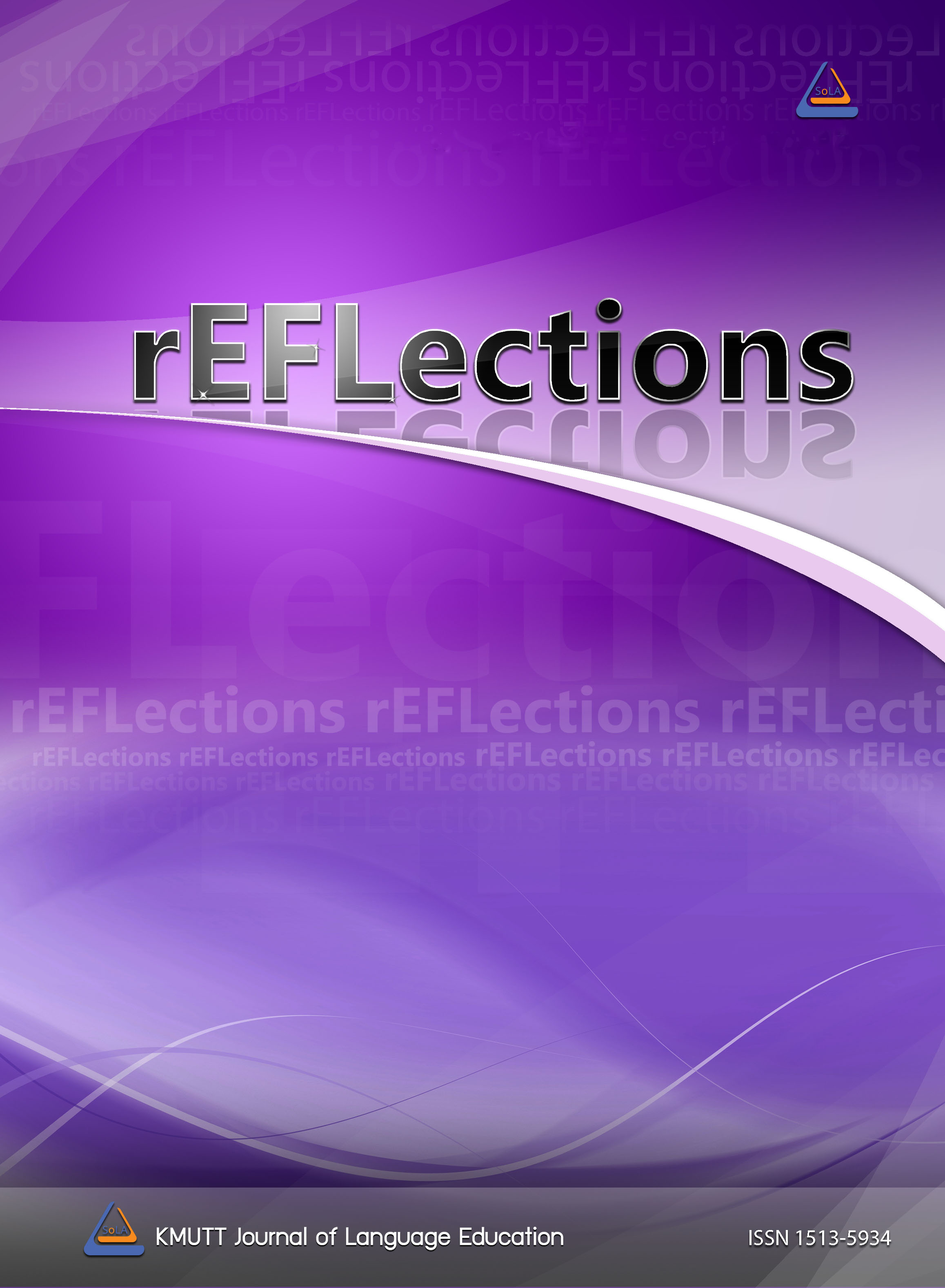The Politeness Strategies of Thai Undergraduates in an Instant Messaging Application
Main Article Content
Abstract
The aim of this study is twofold: to analyze politeness strategies in the online conversations of Thai students, and to suggest how this analysis can be applicable to pedagogical practice. A corpus of a 21-month instant online conversation among students and teachers has been analyzed. Throughout the time of data collection, the teachers continually encouraged students to use English and French to promote the use of foreign languages that they were learning. The result of statistical analysis showed the relation between speech acts and politeness strategies used in the data. It could be claimed that the students’ language proficiency governed their politeness strategies. As a result, the authors proposed a modification of Brown & Levinson’s (1978) Weightiness formula for non-native speakers of English as: Wx = LP(S) × [D(S,H) + P(H,S) + Rx]. The results also showed that emoticons were used as redressive actions in politeness. Further, interlanguage pragmatics in the data were discussed based on linguistic competency and socio-cultural norms in the participants’ L1. The results suggest that teachers and curriculum developers could better understand students’ communication behaviors and language competency through computer-mediated communication. Finally, we offer suggestions to promote online communication in the context of active learning.
Article Details

This work is licensed under a Creative Commons Attribution-NonCommercial-NoDerivatives 4.0 International License.
References
Brown, P., & Levinson, C. L. (1987). Politeness: Some universals in language usage. Cambridge University Press.
Culpeper, J. (1996). Towards an anatomy of impoliteness. Journal of Pragmatics, 25, 349-367.
Culpeper, J. (2011). Impoliteness using language to cause offence. Cambridge University Press.
Fullwood, C., Orchard, L. J., & Floyd, S. A. (2013). Emoticon convergence in internet chat rooms. Social Semiotics, 23(5), 648-662.
Grice, P. (1975). Logic and conversation. In J. L. Morgan & P. Cole (Eds.), Syntax and semantics 3: Speech acts (pp. 41-58). New York: Academic Press.
Gu, Y. (1990). Politeness phenomena in modern Chinese. Journal of Pragmatics, 14, 237-257.
Ho, C. H., & Swan, K. (2007). Evaluating online conversation in an asynchronous learning environment: An application of Grice’s cooperative principle. Internet and Higher Education, 10, 3-14.
Ide, S., Hill, B., Carnes, Y., Ogino, T., & Kawasaki, A. (2005). The concept of politeness: An empirical study of American English and Japanese. In R. Watts, S. Ide & K. Ehlich (Eds.), Politeness in language: Studies in its history, theory and practice (pp. 281-298). Berlin: Mouton de Gruyter.
Jaszczolt, K. M. (2002). Semantics and pragmatics meaning in language and discourse. London: Pearson Education Limited.
Kanchina, Y. (2018). Politeness strategies in informal memorandum. Journal of Language and Culture, 37(2), 35-60.
Kong-in, W., & Damnet, A. (2018). The implementation of ISSECI model for enhancing Thai EFL students’ intercultural pragmatic competence: Politeness strategies. Advances in Language and Literary Studies, 9(3), 34-42.
Kongkerd, W. (2015). Code switching and code mixing in Facebook conversations in English among Thai users. Executive Journal, 35(1), 126-132.
Leech, G. N. (1983). Principle of pragmatics. New York: Longman.
Matsumoto, Y. (1988). Reexamination of the universality of face: Politeness phenomena in Japanese. Journal of Pragmatics, 12(4), 403-426.
Nguansuk, S. L. (2019). Thailand tops global rankings. Retrieved from https://www.bangkokpost.com/business/1631402/thailand-tops-global-digital-rankings.
Parker, F., & Riley, K. (2005). Linguistics for non-linguists: A primer with exercises (4th ed.). New York: Pearson International Edition.
Schallert, D. L., Chiang Y. V., Park, Y., Jordan, M. E., Lee, H., Cheng, A. J., Chu, H. R., Lee, S., Kim, T., & Song, K. (2009). Being polite while fulfilling different discourse functions in online classroom discussions. Computer & Education, 53(3), 713-725.
Song, S. (2012). Politeness and culture in second language acquisition. New York: Palgrave Macmillan.
Tudini, V. (2010). Online second language acquisition conversation analysis of online chat. New York: Continuum International Publishing Group.
Vandergriff, I. (2013). Emotive communication online: A contextual analysis of computer-mediated communication (CMC) cues. Journal of Pragmatics, 51, 1-12.
Watts, R. J. (2003). Politeness key topics in sociolinguistics. Cambridge: Cambridge University Press.
Wongwarangkul, C. (2000). Analysis of the natural of interlanguage pragmatics in choice making for requesting strategies by Thai EFL learners. [Doctoral dissertation]. Retrieved from https://d.lib.msu.edu/etd/30573.


